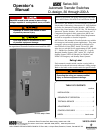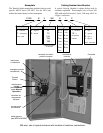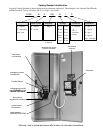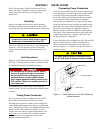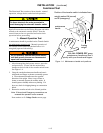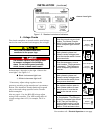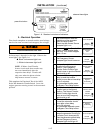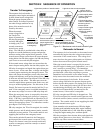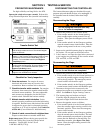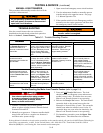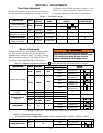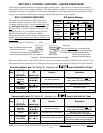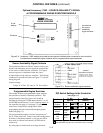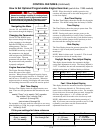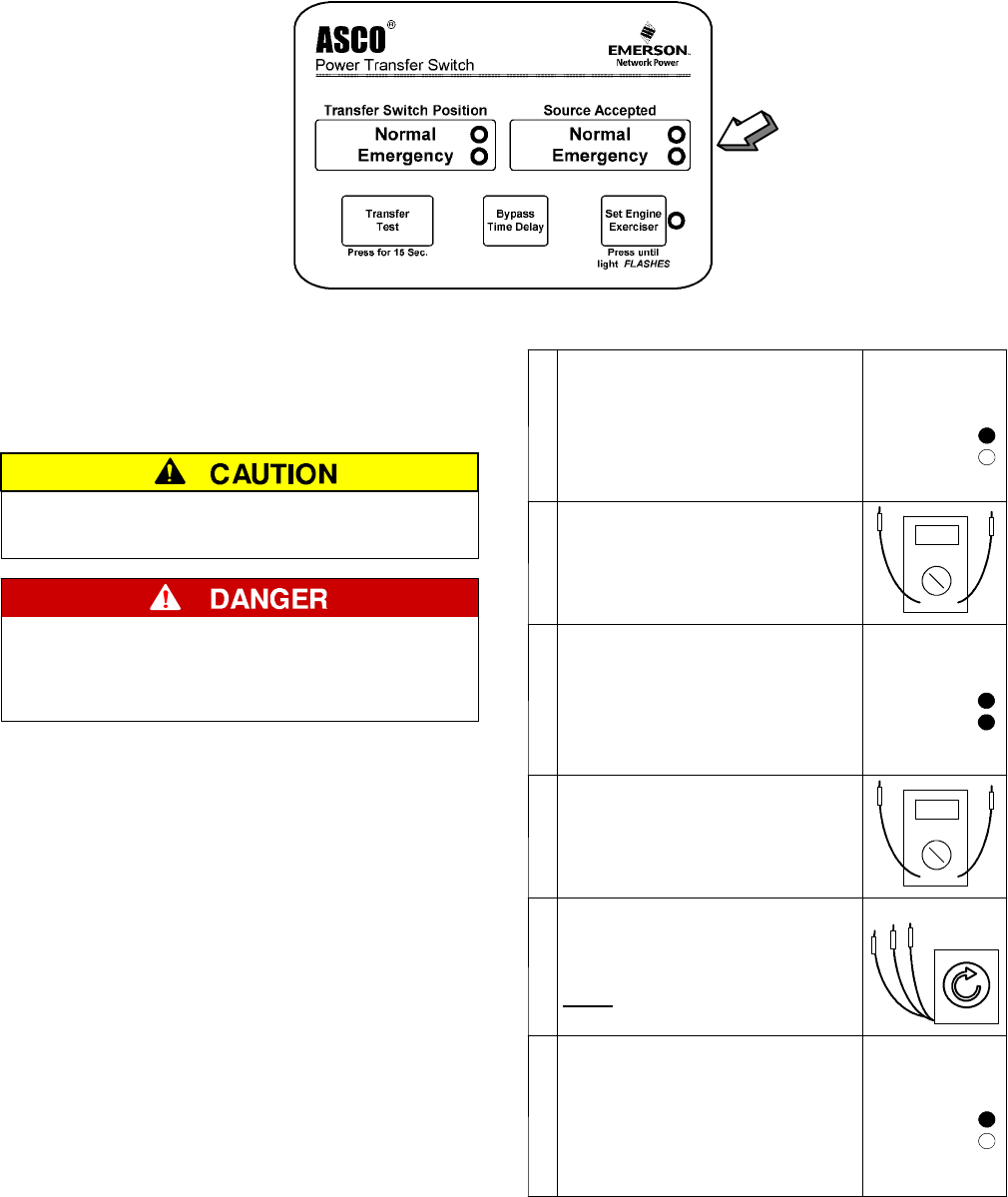
INSTALLATION (continued)
1 --- 4
observe these lights
Figure 1–5. Standard controls and indicators.
2–VoltageChecks
First check nameplate on transfer switch; rated voltage
mustbethesameasnormalandemergencylinevoltages.
Verify that the feeders have been
connected to the proper lugs.
Useextremecautionwhenusingameter
to measure voltages in the following
steps. Do not touch power terminals;
shock, burns, or death could result !
Perform steps 1 through 6 at the right. Observe the
status lights. See Figure 1–5.
O Black circle means light is on.
P White circle means light is o ff .
* If necessary, adjust voltage regulator on the
generator a ccording to the manufacturer’s recommen-
dati ons. The Automatic Transfer Switch will respond
only to the rated voltage specified on the Transfer
Switch nameplate.
Also see page 4–1 for the HI–LOW voltage adjust
setting in the controller. The LOW setting shifts all
voltage settings down 4.2%; for example, 240 V to
230V.
1
Close the normal source circuit
breaker. The Normal Transfer
Switch Position and the No rmal
Source Accepted lights should
come on.
Source Accepted
Normal
Emergency
2
Use an accurate voltmeter to
check phase to phase and
phase to neutral voltages pres -
entatthetransferswitchnormal
source terminals.
3
Close the emergency source
circuit breaker. (Start generator,
if necessary.) The Emergency
Source Accepted light should
come on.
Source Accepted
Normal
Emergency
4
Use an accurate voltmeter to
check phase to phase and
phase to neutral voltages pres -
ent a t the transfer switch emer-
gency source terminals.*
5
Useaphaserotationmeterto
check phase rotation of emer-
gency source; it must be the
same
as the normal source.
A
B
C
6
Shut down the engine–genera-
tor, if applicable. The Emergen-
cy Source Accepted light should
go off. Then put the starting
control selector sw itch (on the
generator set) in the automatic
position. Close enclosure door.
Source Accepted
Normal
Emergency
Now continue to 3 – Electrical Operation on next page.



